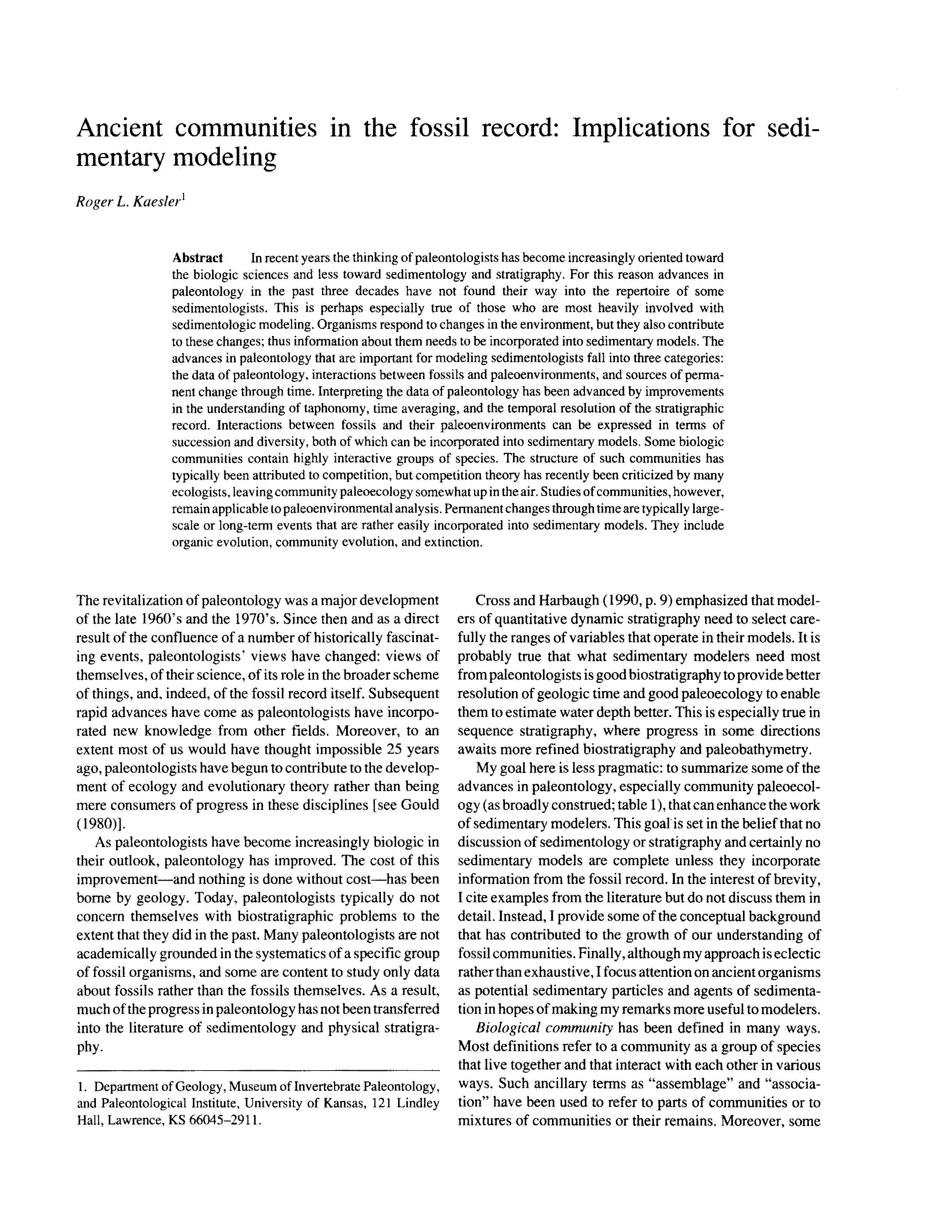Ancient communities in the fossil record: Implications for sedimentary modeling
DOI:
https://doi.org/10.17161/kgsbulletin.no.233.20455Abstract
In recent years the thinking of paleontologists has become increasingly oriented toward the biologic sciences and less toward sedimentology and stratigraphy. For this reason advances in paleontology in the past three decades have not found their way into the repertoire of some sedimentologists. This is perhaps especially true of those who are most heavily involved with sedimentologic modeling. Organisms respond to changes in the environment, but they also contribute to these changes; thus information about them needs to be incorporated into sedimentary models. The advances in paleontology that are important for modeling sedimentologists fall into three categories: the data of paleontology, interactions between fossils and paleoenvironments, and sources of permanent change through time. Interpreting the data of paleontology has been advanced by improvements in the understanding of taphonomy, time averaging, and the temporal resolution of the stratigraphic record. Interactions between fossils and their paleoenvironments can be expressed in terms of succession and diversity, both of which can be incorporated into sedimentary models. Some biologic communities contain highly interactive groups of species. The structure of such communities has typically been attributed to competition, but competition theory has recently been criticized by many ecologists, leaving community paleoecology somewhat up in the air. Studies of communities, however, remain applicable to paleoenvironmental analysis. Permanent changes through time are typically large-scale or long-term events that are rather easily incorporated into sedimentary models. They include organic evolution, community evolution, and extinction.
Downloads

